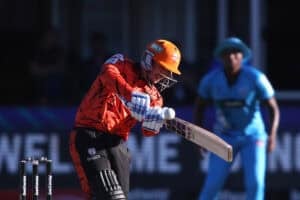The names of the camps in the Kruger National Park evoke strong images when they are mentioned.

Here’s how a few of the Kruger National Park’s (KNP) camps got their names:
1. Letaba Rest Camp
Letaba Rest Camp is situated on the bend of the Letaba River. The camp is midway between the southern and northern boundaries, reports the Lowvelder.
The name means “river of sand”. The riverbed is an excellent location for game viewing, particularly elephant.
Letaba Camp in the 1940s. Picture: Lowvelder; Lowveld Archives
2. Orpen Rest Camp
Orpen Rest Camp is situated on the western border of the KNP. It derived its name from the surname of the donor of the land, Eileen Orpen.
It is an area of scattered trees and wide-open plains populated by the three big cats. You can also look forward to encounters with wild dog.
3. Talamati Bushveld Camp
Talamati Bushveld Camp is situated in a large open valley. Talamati is a Xitsonga word that means “lots of water”.
Despite the meaning of the name, the river is actually dry. The clay soil acts as a giant sponge holding a vast reservoir of underground water. The vegetation there is lush all year round and attracts grazers.
4. Sirheni Bushveld Camp
Sirheni Bushveld Camp nestles on the edge of the KNP’s northern plains.
The Mphongolo River flows close by. Sirheni is a Tsonga word that means “cemetery”. There is an elephant graveyard at a site near to the camp. From the camp’s bird hides a wide variety of game and birds can be watched.

Sirheni Bush Camp. Picture: Lowvelder
5. Skukuza
Skukuza is a Shangaan word meaning either “he who sweeps clean” or “he who turns everything upside down”. It is the biggest camp in the park.
Some Krugerholics even call Skukuza the “capital” of the Republic of Kruger!
It is close to the Kruger Gate and an excellent springboard to the rest of the Park.
Skukuza in 1937. Picture: Lowvelder; Lowveld Archives
6. Punda Maria
The name of the Punda Maria rest camp was given in 1919 by the first ranger to be posted to the area, Captain JJ Coetser.
He mistakenly named his post Punda Maria in the belief that this was the Swahili name for zebra, the first big game he saw on arrival.
The correct Swahili name is actually “punda milia” or striped donkey. When the error was pointed out to him, he chose to retain the name, in honour of his wife, Maria.
Dr. Salomon Joubert said that in 1959, the Parks Board changed the name to Punda Miliya.
Dr. Van Warmelo, a well-known ethnomologist, said that the name should be spelt Punda Milia and the board accepted that.
In 1981 Dr. Tol Pienaar did a submission to the board and two acquaintances of Coetzer Hewit Ivy and Astley Maberley said that this is the correct version of how it came about.
The board accepted the explanation and the name was restored in 1981.
Punda Maria many years ago. Picture: Lowvelder
– Caxton News Service
For more news your way, follow The Citizen on Facebook and Twitter.






